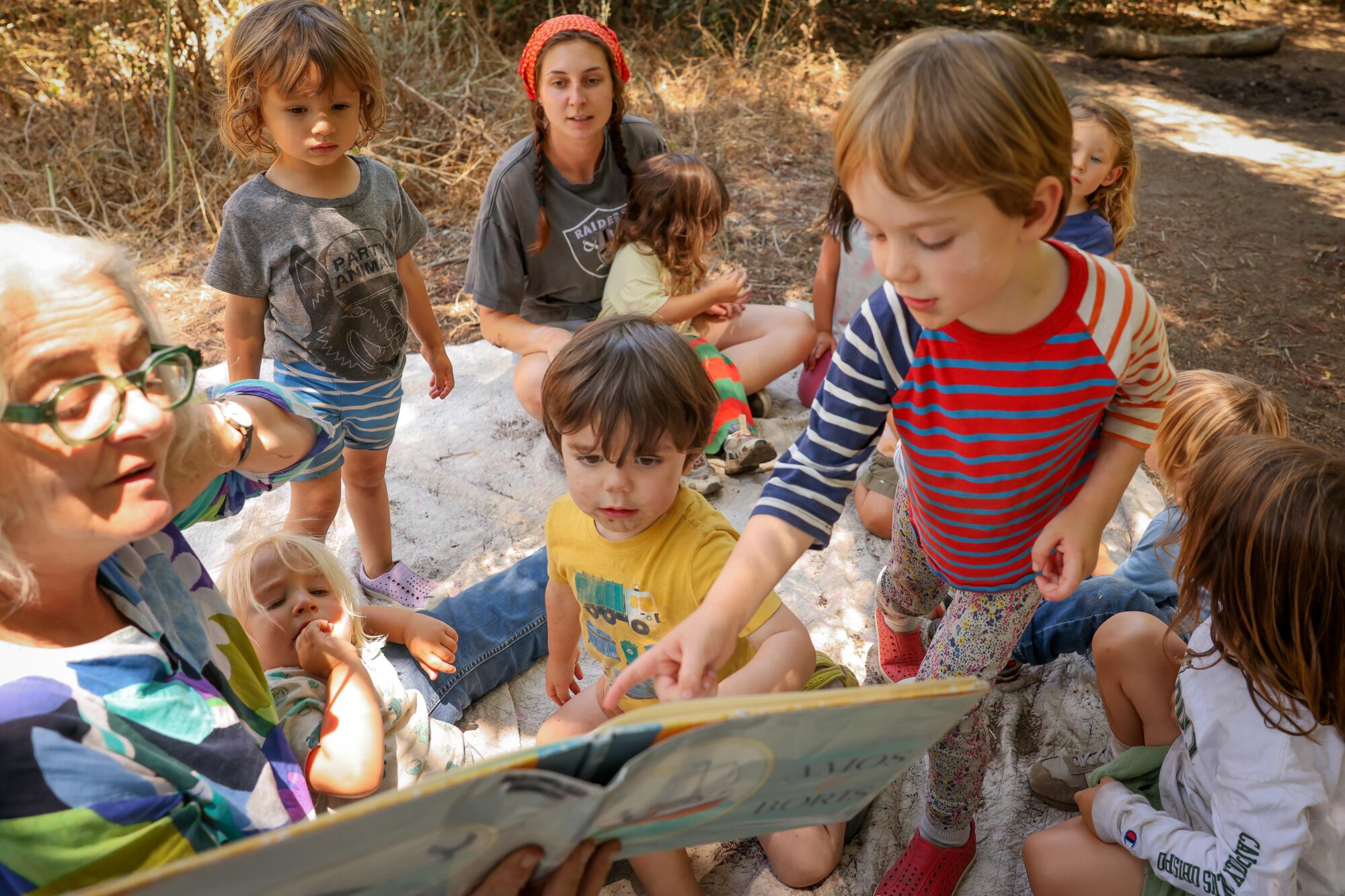
- Share via
On a glorious summer day, a preschooler named Roger teetered on rocks dotting a creek in eastern Orange County, unsure if he could make it back to where his classmates and caregivers were waiting.
A volunteer youth mentor with Earthroots Field School stuck out her hand, reassuring the 3-year-old, who grasped it and took one confident step toward her. Then another. “There we go!” someone called out as he cleared the burbling waterway.
Pushing edges — like learning to balance on rocks without a parent swooping in — is a central tenet of nature-based education, according to Angela Capps, a teacher at the school, one of a rapidly growing number of early education providers that are centered around the natural world.
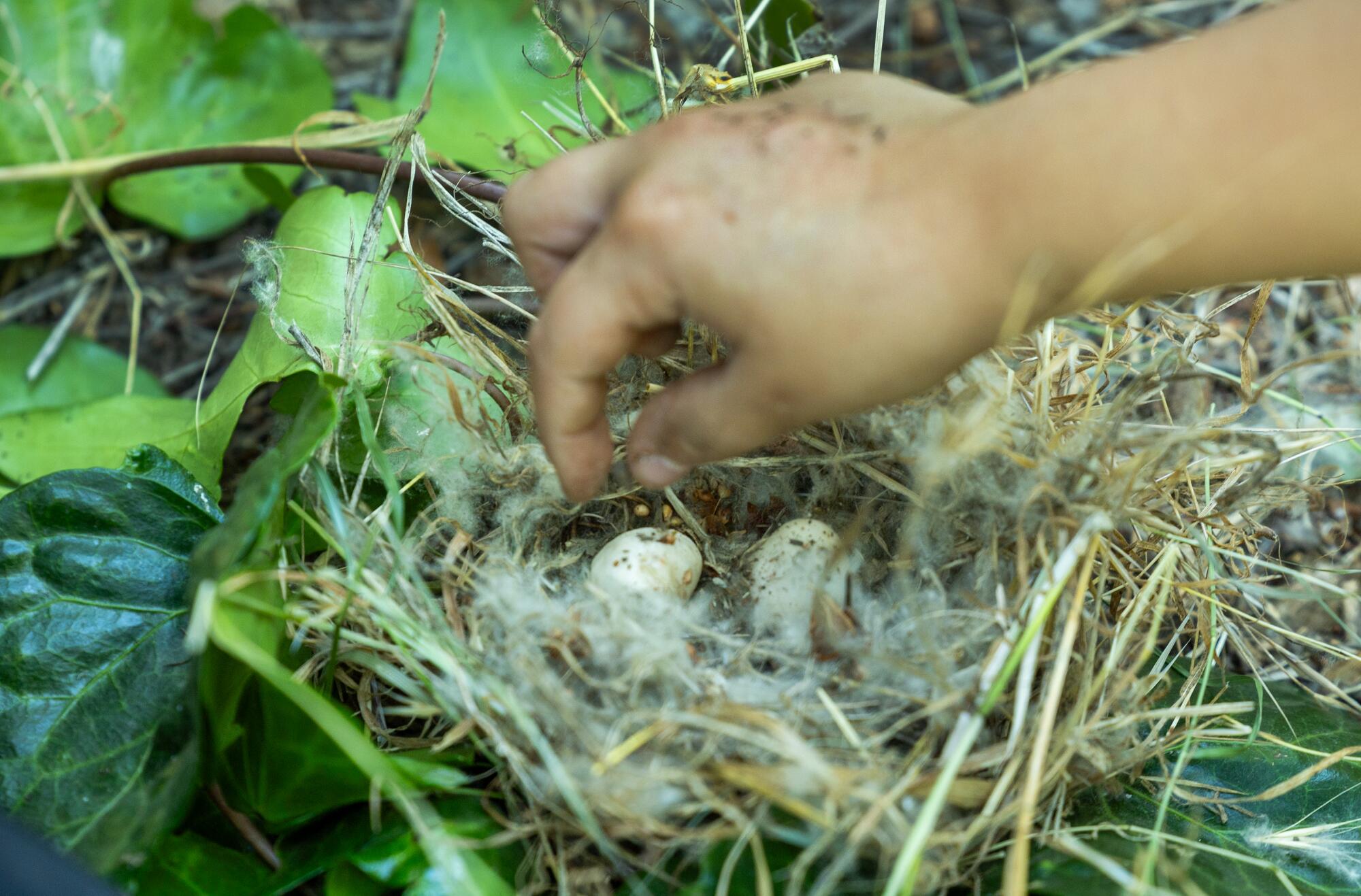
Nature-based education — sometimes called forest schools, nature preschools or outdoor kindergartens — is based on a straightforward premise: “that it’s really good to have kids outdoors a goodly chunk of their day,” said David Sobel, professor emeritus at Antioch University New England and author of “Beyond Ecophobia: Reclaiming the Heart in Nature Education.”
Indeed, researchers have found nature-based learning supports creativity, resiliency, executive function, school readiness and a host of other benefits for the body and mind.
Scandinavia-originated forest schools arrived in the U.S. in the 1960s and are part of the broader nature-based education movement. In recent years, the concept has exploded amid worries about children getting lost in the virtual world and the country’s youth mental health crisis. The pandemic turbocharged the trend, as schools closed and parents sought safe learning environments for their preschoolers.
As of the last school year, there were about 800 nature preschools in the U.S., a 200% increase since 2017, according to a survey by the nonprofit Natural Start Alliance, which supports access to nature-based early childhood education. California is among the top three states with the highest number of schools, which primarily serve children ages 3 to 5.
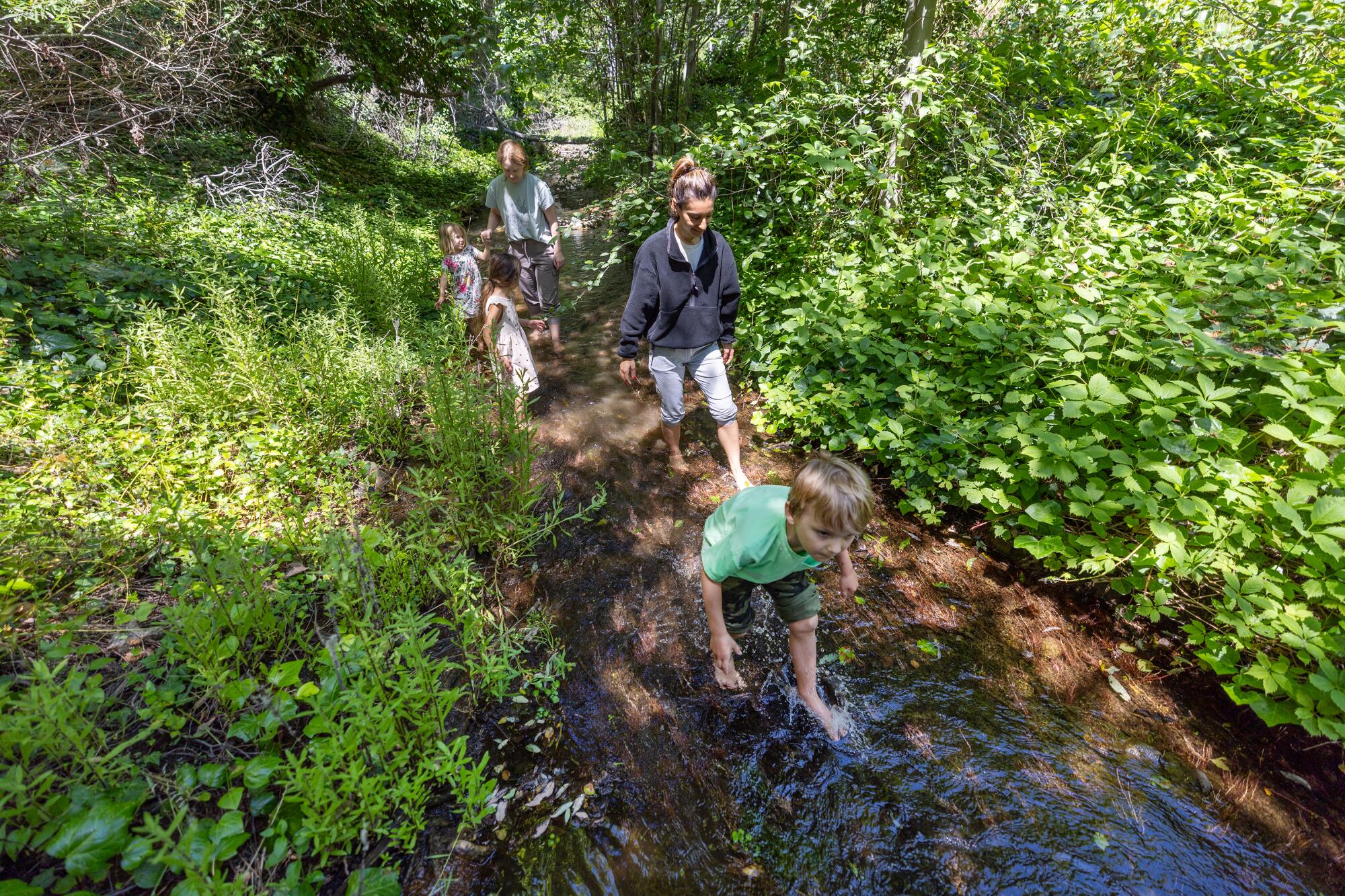
Proponents say children immersed in nature are happier and healthier — and may be poised to become the next generation of climate warriors. An early connection to nature can plant the seeds for its stewardship.
“We only protect that which we love,” said Lia Grippo, president of the California Assn. of Forest Schools. “If we want children to grow into adults who can carry the burdens, honestly, we and previous generations have created for them, then they have to be in love with the land they live on.”

While the movement is suffused with optimism — as growth shows no sign of slowing down — there are challenges.
A large number of programs are unlicensed and therefore unable to tap public funding, prompting criticism that they’re only accessible to wealthy families who can pay tuition, and the movement is contending with a stark lack of diversity that hasn’t meaningfully improved even as programs multiplied.
According to Alliance’s recent survey, white children made up 78% of the student bodies of nature preschools, compared with roughly 47% of the U.S population. Latino and Black children are underrepresented relative to the broader population. (Addressing racial disparities is top of mind for many nature educators, and this past year saw the creation of the Black Educator Network, an Alliance-affiliated professional community for Black educators in nature-based early education.)
Many of the programs are geared toward preschoolers, in part because of a desire to front-load a child’s life with meaningful experiences in nature. Another reason is early education tends to be more flexible than grade school in terms of structure and regulation, or as Sobel puts it: It’s “less riddled with academic expectations so it’s a place where the innovation could happen easier.”
Many programs strive to develop environmental literacy, which can broadly be defined as understanding and caring about environmental issues and having the skills needed to work toward solving them. But how do teachers start molding preschoolers into model environmental citizens?
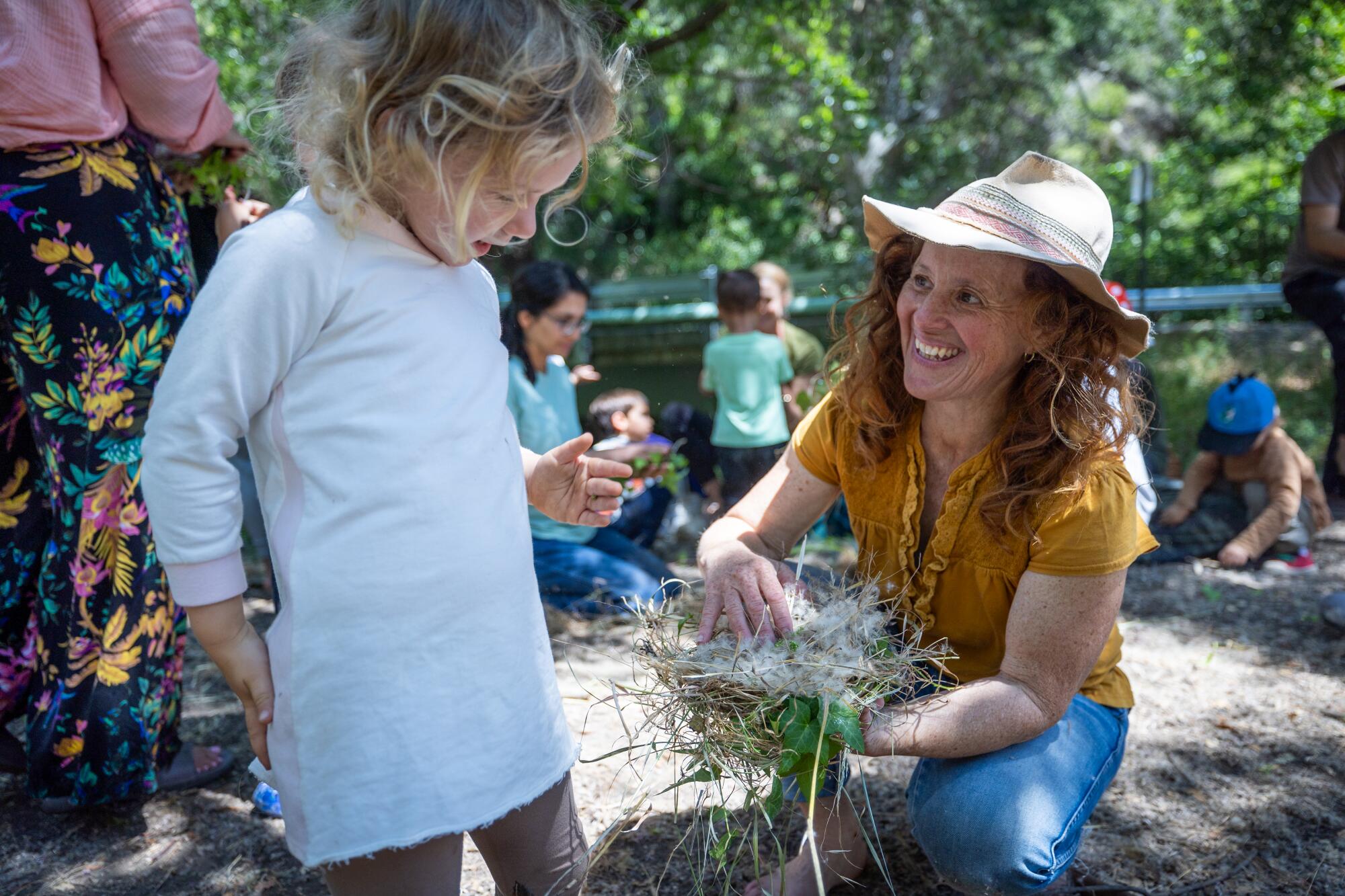
Jodi Levine, executive director of Earthroots, said the teachers don’t directly discuss climate change with their very young learners. Creating lessons that help kids “fall in love with nature” is “all that they need to understand the beauty of it and the value so that it’s not destroyed,” she said.
Becca Hackett-Levy, founder and director of Northeast L.A. Forest School, said learning about climate change “can start the day they come out of the womb.” It’s not about discussing the science or overarching concepts, but “about being present in nature and seeing what we as humans are doing.”
Children also experience it firsthand. Last year, a brush fire forced a group to evacuate from Elysian Park. Ash rained down as the children were asked to share what they felt, saw, heard, tasted and smelled. Hackett-Levy said it was a concrete lesson about a warming climate colliding with dry invasive grasses.
Fabienne Hadorn, co-founder of the Arroyo Nature School, which operates outdoors in a public park in Pasadena, said the topic sometimes comes up as children ask questions and make observations. The discussions don’t involve the term “climate change,” but center on the impacts — such as cars causing damage to the air. The emphasis is often on the need to take care of the planet.
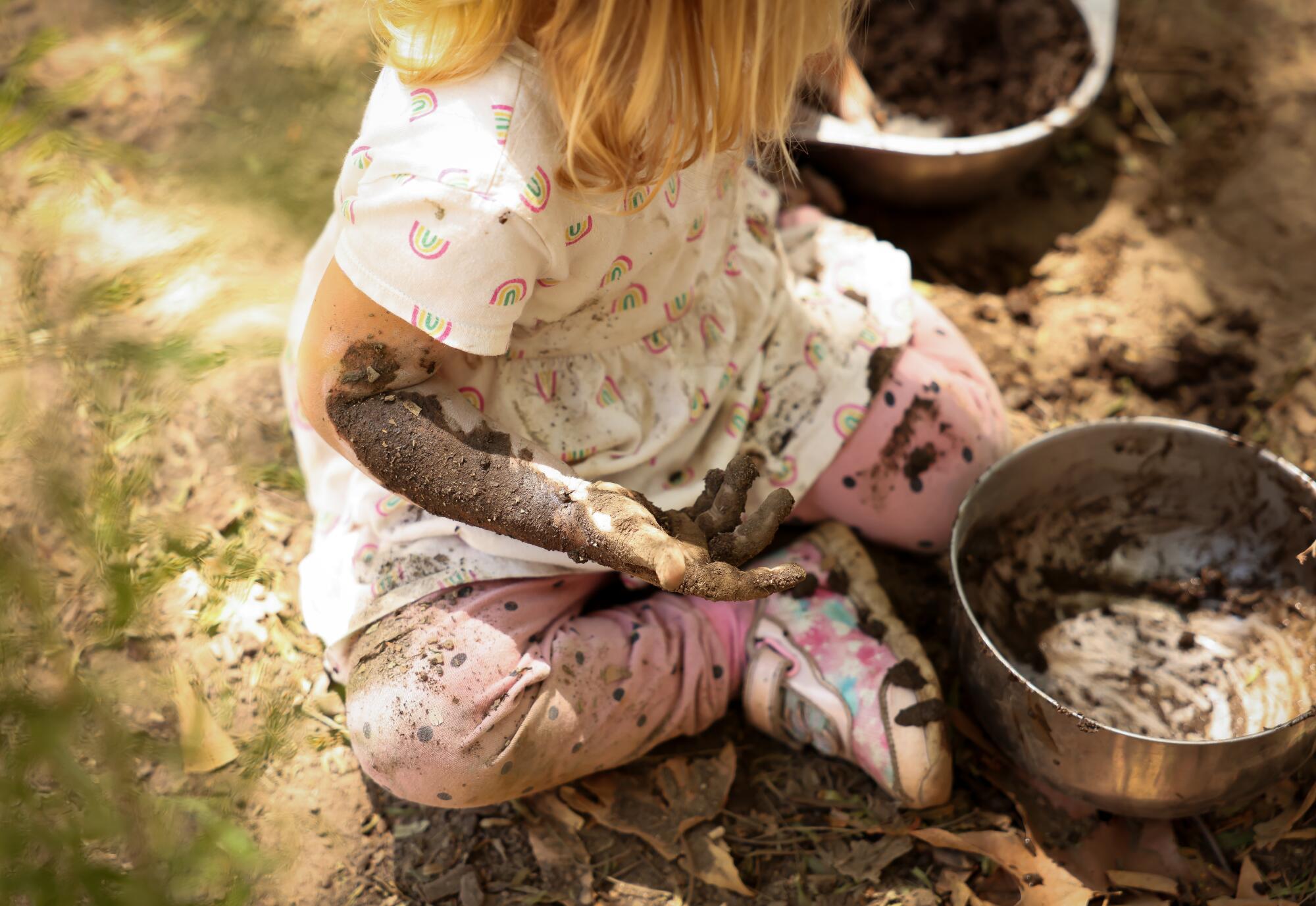
Talking about climate change can be stressful, but not all stress is equal, according to Rahil Briggs, national director of Zero to Three’s HealthySteps, a pediatric primary care program. If a child is in a stable, safe and nurturing environment, they can experience “positive stress.” A small amount of motivating anxiety, she said, is helpful for learning new skills. It can be felt while learning to cross a stream or discussing the environment in a developmentally appropriate way.

While California education officials have championed environmental literacy for students, foundational elements of nature school can put it at odds with public education and regulatory norms.
Nature schools, for example, typically embrace managed risk. Many in the movement see exposing kids to experiences such as climbing a tree as key to developing the resiliency needed to withstand future stressors.
Hadorn said her staff may offer guidance as the children climb trees, advising where to put their foot, or catch them if they falter, but the youngsters lead the charge. “We make sure a teacher at every moment is there if they want to climb,” she added.

Operating outside can also create tension with public land managers. Levine said she was kicked out of two parks as she learned to navigate the rules — including the requirement that visitors stay on paths. “We know better now,” she said, and students are taught to respect the rules of places they go. (Eventually the school acquired a property in Silverado Canyon.)
Hadorn said she moved locations in Lower Arroyo Park after officials tried to charge her a fee associated with renting out a specific area of the park — a category she doesn’t think applies to her roving band of children. She said she has a good relationship with the rangers and always makes sure the area is left in pristine condition.
Hackett-Levy approached L.A. city park officials and worked out an agreement to hold classes in Elysian and Griffith parks. Previously, she’d sometimes try to nab a first-come, first-served area, but would find herself scrambling if someone else had gotten there first.
According to the survey by Natural Start Alliance, 42% of nature schools are not licensed. The percentage is much smaller for programs that are based entirely outdoors, and, according to state regulators, there are none in California.
Kit Harrington, Alliance’s senior policy advisor, said these schools often operate for fewer hours or with fewer children than required for licensing, or are otherwise exempt. Being unlicensed “could imply that something should be licensed but isn’t (as in an unlicensed doctor, for example),” she said in an email. “In the case of these programs, they are primarily operating in ways that don’t require them to be licensed.”
In many states, fully outdoor schools aren’t eligible for licensing. California regulators indicated it’s a gray area and there does not appear to be an effort to clarify the rules or develop new ones.
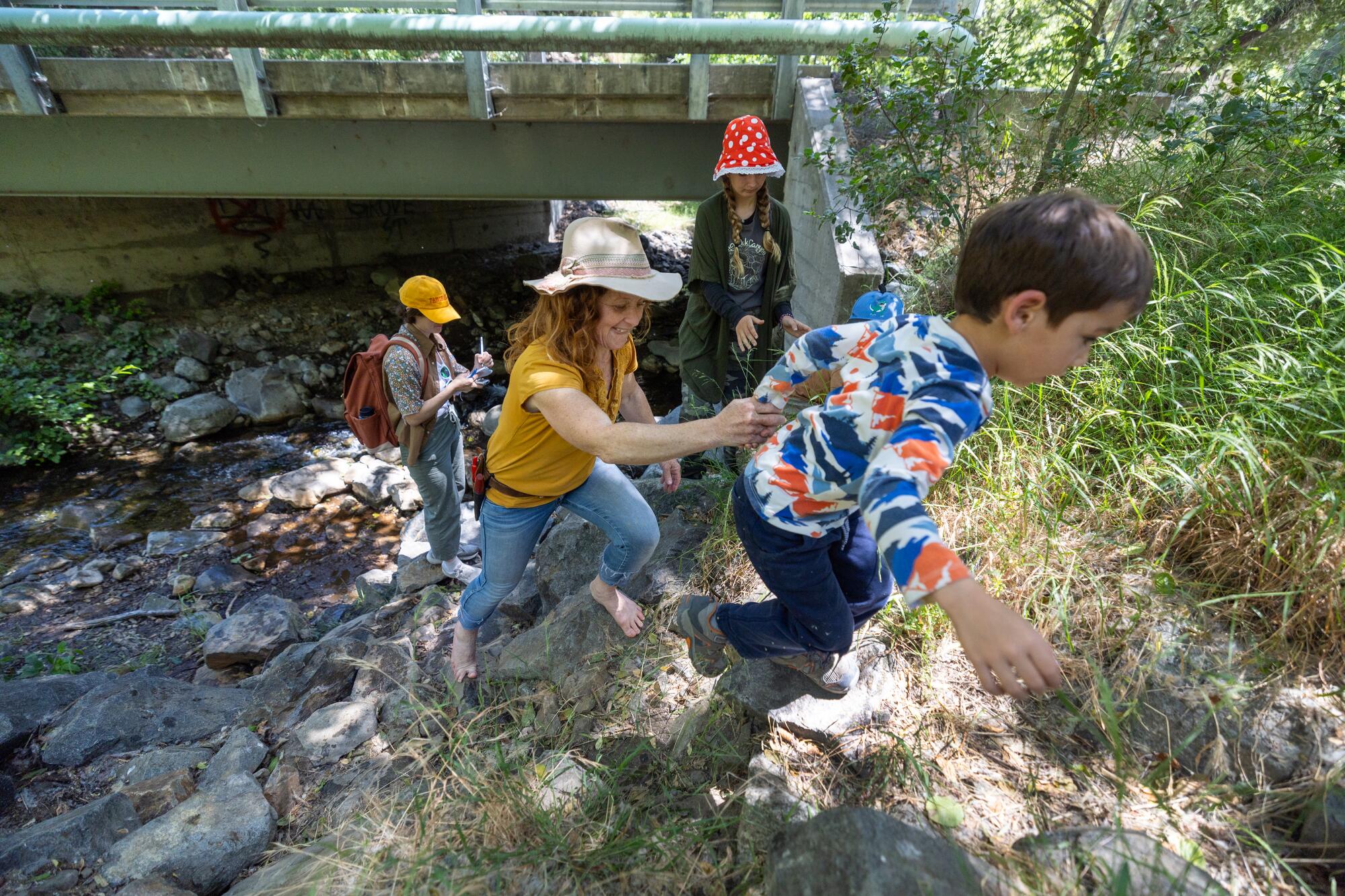
Some nature educators want a path to licensing, but others fear regulations will undercut the spirit of the programs.
Hadorn wonders what might become of tree climbing. Would they set a height limit? She acknowledges that there are upsides, however, such as providing security for parents.
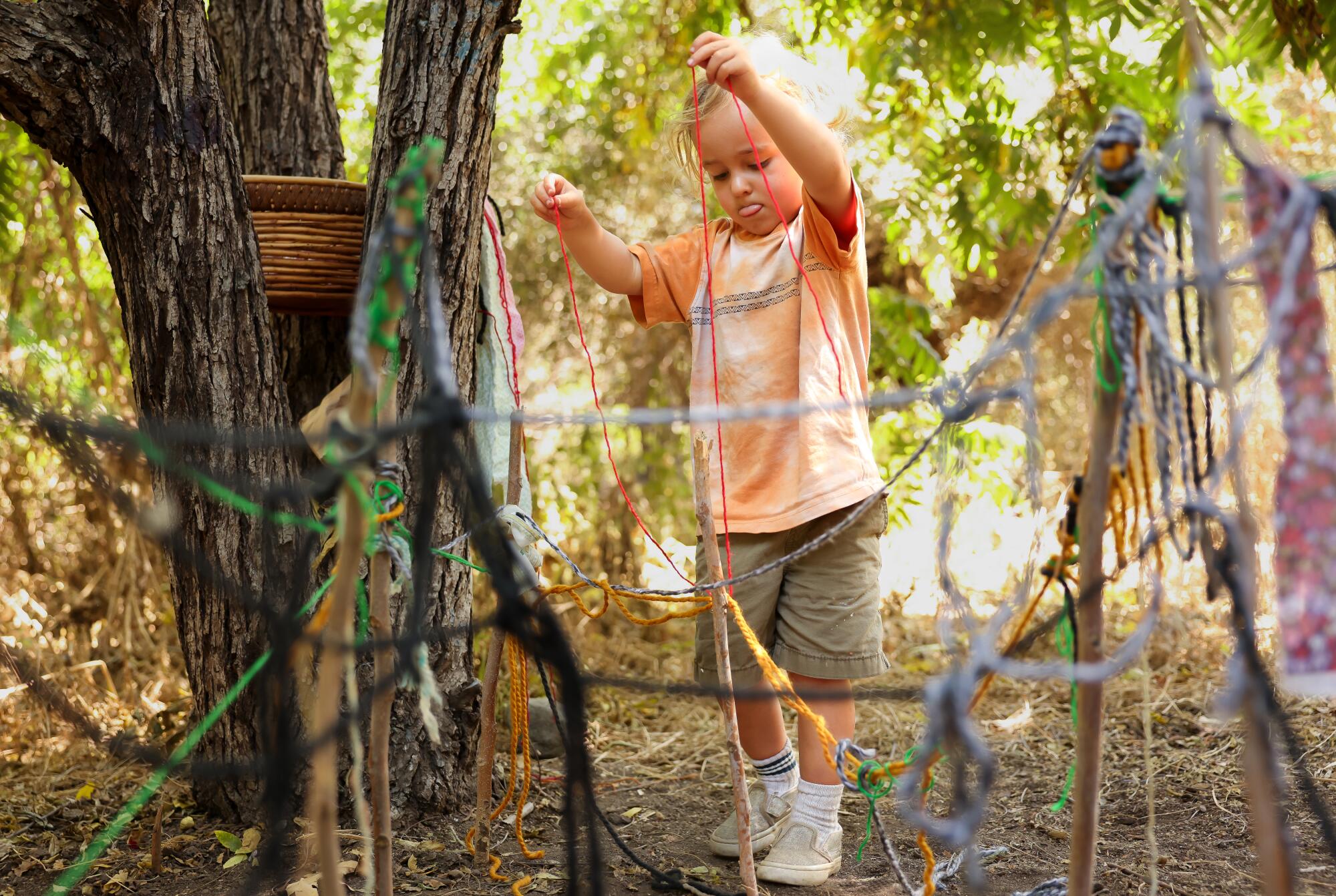
There’s also concern that the landscape — the primary classroom for nature schools — is becoming less safe for youngsters. Extreme phenomena are challenging nature schools’ emphasis on withstanding the elements by simply wearing the right gear. California — touted as a great backdrop for outdoor education because of its frequent bluebird days — is experiencing increasingly fierce wildfires and punishing heat.
The elements disproportionately affect young children, whose smaller bodies absorb “more of the bad stuff,” said Briggs, who is also a clinical professor of pediatrics, psychiatry and behavioral sciences at the Albert Einstein College of Medicine in New York.

As the climate and regulatory landscape evolves, nature continues to teach.
On a recent scorching day, the cascading branches of a California peppertree enveloped a dozen children attending Arroyo Nature School. Hours passed without a phone in sight. Leo, Zoli and Francis wrapped yarn around sticks to create a makeshift jail. Desmond worked water into clay. Asa and Mylo read books about bugs and cars.
Scout brought over a fresh-baked cake to sample. The secret ingredient? Mud.
The gloopy stuff clung to the 2-year-old’s arms like organic opera gloves. It threatened to sully her white dress flecked with rainbows.
She didn’t mind.








